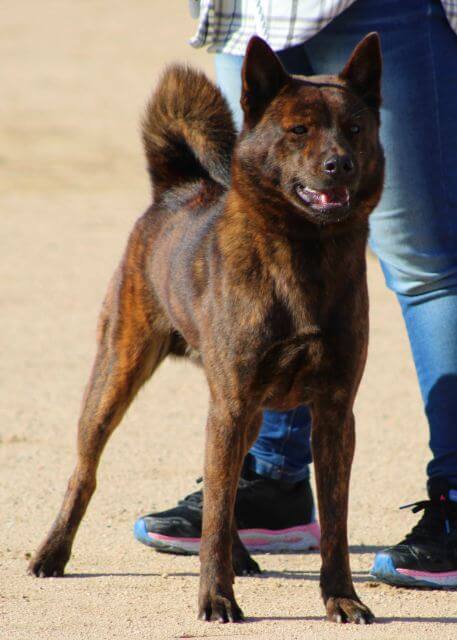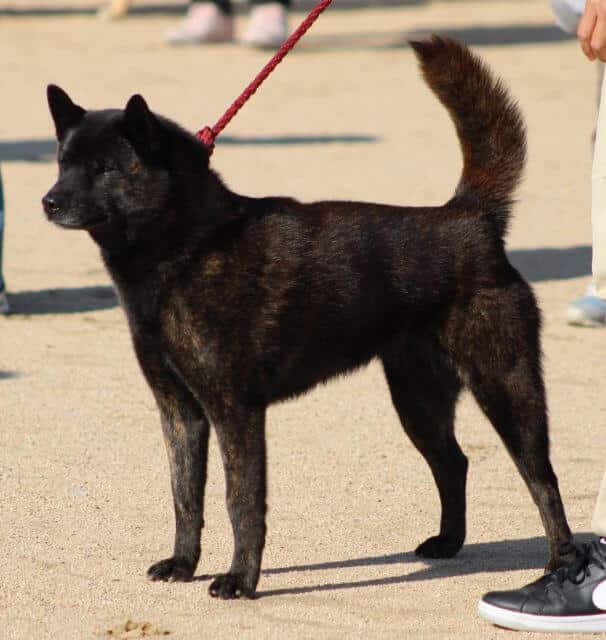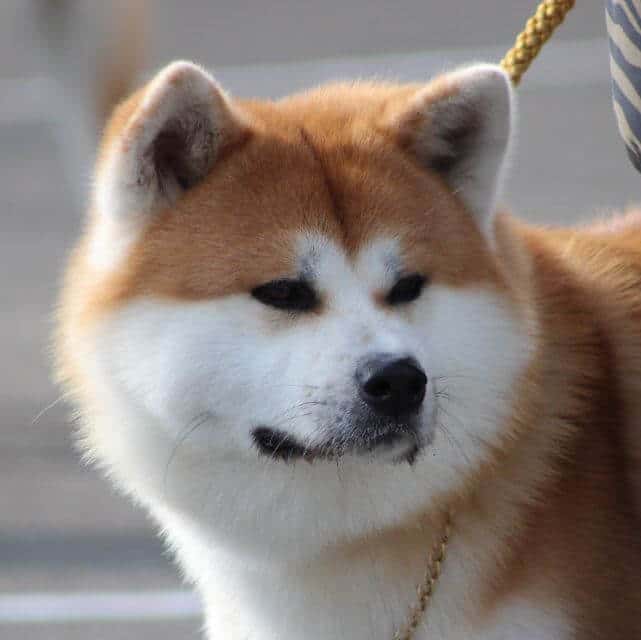
Home » A Field Guide to the Nihon Ken

First, a translation: The phrase Nihon Ken literally means “Japanese Dog,” but specifically refers to these six native Japanese breeds—Shiba Inu, Hokkaido Ken, Kai Ken, Kishu Ken, Shikoku Ken, and Akitainu (called the Japanese Akitainu by AKC to distinguish it from the “American” Akita). The suffixes ken and inu simply mean “dog” in Japanese. These breeds evolved over centuries on the islands of Japan as hunting companions. All share a basically similar spitz type, and all have been designated as natural monuments by the Japanese government. The Nihon Ken Hozonkai (the Japanese Dog Preservation Society, commonly referred to as NIPPO) is the main registry in Japan dedicated to the preservation of the native Japanese breeds, although there are other registries, such as the Akitainu Hozonkai (AKIHO), Kaiken Aigokai (KKA) and Hokkaidoken Hozonkai (DOKENHO) that specialize in a single breed.
American dog fanciers and judges are already quite familiar with both the Shiba Inu and the (American) Akita, since these breeds have enjoyed full AKC recognition for decades and are popular in the American dog show scene. The other five Nihon Ken breeds are still in varying stages of achieving AKC recognition, and their participation in AKC Conformation shows in the Miscellaneous Classes (Kai and Japanese Akitainu) and FSS shows (Shikoku, Kishu, and Hokkaido) is increasing. Since they will undoubtedly be appearing in a ring near you in the future, here is quick guide to recognizing each of them.

The most obvious distinguishing factor among the six Nihon Ken breeds is size. The Shiba Inu is the smallest at 13.5 to 16.5 inches at the shoulder; the Japanese Akitainu is the largest at 22.5 to 27.5 inches; and the other four breeds are considered medium-sized, ranging from a minimum of 15.5 inches for the Kai to a maximum of 22 inches for the Kishu and Shikoku. In all breeds there is an allowable range, and bitches will tend to be smaller than dogs. But if the tallest Shiba and the shortest Kai overlap in size, how do you tell the difference? This brings us to an important factor that doesn’t require measuring: color. There are certain colors that are required in some Nihon Ken that are disallowed in others.
The easiest color rule to remember is that all Kai Ken must be brindle; the color ranges from a mostly black dog with light tiger striping (called kurotora, or “black tiger”) to a red-based dog with black striping (akatora, or “red tiger”). If you’re looking at a 16-inch dog and it’s not a brindle, it can’t be a Kai Ken. Conversely, Shiba Inu are never brindle; the preferred colors are red, red sesame (a 50/50 overall mixture of black hairs within a red base coat), and black and tan. Shibas will also always display urajiro, the cream-to-white ventral shading on the cheeks, throat, chest, belly, inner legs, and underside of the tail. Kai Ken do not have urajiro.

When it comes to discerning the Japanese Akitainu from the Akita, the breeds differ by more than just color. The American Akita is somewhat taller (24-28 inches), carries noticeably heavier substance and bone, will often have a black mask, and will come in a variety of colors (including pinto) that are not allowed in the Japanese Akitainu. The Akitainu is a moderately-boned, lighter-bodied dog, with a more obvious tuck-up. The Japanese Akitainu’s striking head type is unique to this breed. Akitainu will only be red, brindle, or white; red and brindle Akitainu must also have urajiro. For all three Akitainu colors, black masks and pinto markings are disqualifications.
When comparing the Kishu Ken, Shikoku, and Hokkaido, all are medium-sized and there is some overlap in allowed colors, so finer aspects of breed type will become important distinguishing factors. The Kishu Ken is usually an all-white dog, but red and sesame Kishu do occur and are allowed. In type, Kishu are muscular and powerfully built, true to their heritage as a hunter of wild boar. A unique trait of Kishu Ken is their hamaguri eye shape; the triangular eye common to all the Nihon Ken is slightly modified in the Kishu to a shape resembling a clamshell.
The Shikoku is most commonly a sesame color, which is an even distribution of black hairs over a grey (kurogoma) or red (akagoma) base color. Less common allowed colors are red and black and tan. All colors must also have urajiro. The build of the Shikoku is more streamlined and elegant than the other medium-size Nihon Ken; the head has a less-pronounced stop, and the bone is not as heavy. The eyes of the Shikoku have a deeply penetrating gaze, which gives the Shikoku a “complex and ethereal beauty” as described by NIPPO.
The Hokkaido is only slightly taller than the Kai Ken, but has a broader chest, smaller ears, and a lower center of gravity than the other Nihon Ken. It carries a heavier and slightly longer coat, befitting its origin in the northernmost island of Japan where the winters are cold and harsh. It also has the largest variety of allowed colors: Hokkaido come in red, white, sesame, black and tan, and brindle. The most common color is red, and white dogs are increasing in popularity.

For all their unique and fascinating differences, the Nihon Ken are all clearly related to one another by their common aspects of type and temperament. All Nihon Ken must have dark brown eyes, erect, triangular, forward-tipped ears, tails carried over the back, a dense double coat, and the essential qualities of kan-i (spirited boldness), ryosei (loyal obedience), and soboku (modest refinement and dignity). In fact, NIPPO uses a single basic standard to describe all Nihon Ken; there are supplemental judging resolutions that spell out the subtle but critical aspects of type that are unique to each breed. For further understanding of these similarities and differences, NIPPO has provided English translations for their standard and judging resolutions here:
https://www.nihonken hozonkai.or.jp/en/uploads/english/nihonken%20standard.pdf
Now you’re ready to get out there and see if you can identify some Nihon Ken in the wild—or at least at your nearest dog show!

